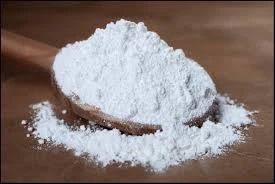
e141 food additive
Understanding E141 Food Additive Uses, Safety, and Controversies
Food additives are substances added to foods to enhance flavor, appearance, and preservation. Among these, E141 is a widely recognized food additive known as Copper Complexes of Chlorophylls and Chlorophyllins. Its bright green pigment is primarily used to color various food products, thereby making them visually appealing to consumers. While E141 plays a significant role in the food industry, it is essential to understand its uses, safety regulations, and any potential controversies surrounding it.
What is E141?
E141 consists of copper chlorophylls, extracted from natural sources, specifically from green plants. This additive is commonly utilized to impart a vibrant green color to food items such as sauces, sweets, dairy products, and beverages. The primary advantage of using E141 is its natural origin, appealing to consumers looking for less synthetic alternatives in their diets. By delivering an eye-catching hue, E141 also helps in enhancing consumer acceptance of food products, especially in a competitive marketplace.
Uses of E141
The applications of E141 span across various food products
. In the realm of culinary delights, it is predominantly used in items such as- Beverages E141 can be found in green drinks, smoothies, or any product where a natural green color is desired. - Confectionery It adds a vibrant look to candies and sweets, making them visually enticing. - Dairy Products Ice creams, yogurt, and other dairy-based goods often incorporate E141 for its appealing color. - Sauces and Dressings Salad dressings, pesto, or sauces for pasta sometimes utilize this additive to enhance their visual appeal.
Apart from food and beverages, E141 can also be found in cosmetics and personal care products, where color consistency and quality are crucial.
e141 food additive

Safety and Regulations
The safety of food additives, including E141, is paramount for regulatory bodies such as the European Food Safety Authority (EFSA) and the U.S. Food and Drug Administration (FDA). E141 has undergone various assessments to ensure it meets safety standards for human consumption. Both EFSA and FDA have concluded that E141 is safe when consumed within established limits.
Though deemed safe, it is crucial that consumers remain aware of the quantities in which additives like E141 are present in foods. Labeling regulations require manufacturers to disclose the use of food additives, enabling consumers to make informed choices about their food.
Controversies and Considerations
Despite its approval and widespread use, some controversies surround food colorings, including E141. Advocates for clean eating often emphasize the significance of maintaining a natural diet free from artificial additives. Even though E141 is derived from natural sources, it is still considered an additive that alters the food's composition.
Moreover, some individuals may experience allergies or sensitivities to certain food colorings, which necessitates the need for thorough labeling. As consumers become more educated about ingredients and additives, they may increasingly seek clarity on the sourcing and processing of food components, including additives like E141.
Conclusion
E141 serves as a vital additive in the food industry, contributing to the visual appeal and consumer acceptance of various products. Its natural origin and safety assessments by regulatory bodies have facilitated its acceptance among manufacturers and consumers alike. Nonetheless, as the conversation around food quality and transparency continues to grow, understanding E141 and other food additives will help consumers make informed dietary choices. The journey of E141 reflects broader trends in food consumption, where health consciousness and elegance converge on our plates.
-
Understanding Synthetic Rubber OptionsNewsApr.27,2025
-
Trichloroisocyanuric Acid: Essential for Clean and Safe WaterNewsApr.27,2025
-
Sodium Dichloroisocyanurate: Key to Safe Water TreatmentNewsApr.27,2025
-
Sodium Acid Pyrophosphate: Essential in Modern Food ProcessingNewsApr.27,2025
-
Essential Water Treatment ChemicalsNewsApr.27,2025
-
Denatured Alcohol and Its Industrial UsesNewsApr.27,2025
-
The Versatile Uses of Sodium BicarbonateNewsApr.24,2025
Hebei Tenger Chemical Technology Co., Ltd. focuses on the chemical industry and is committed to the export service of chemical raw materials.
-

view more DiethanolisopropanolamineIn the ever-growing field of chemical solutions, diethanolisopropanolamine (DEIPA) stands out as a versatile and important compound. Due to its unique chemical structure and properties, DEIPA is of interest to various industries including construction, personal care, and agriculture. -

view more TriisopropanolamineTriisopropanolamine (TIPA) alkanol amine substance, is a kind of alcohol amine compound with amino and alcohol hydroxyl, and because of its molecules contains both amino and hydroxyl. -

view more Tetramethyl Thiuram DisulfideTetramethyl thiuram disulfide, also known as TMTD, is a white to light-yellow powder with a distinct sulfur-like odor. It is soluble in organic solvents such as benzene, acetone, and ethyl acetate, making it highly versatile for use in different formulations. TMTD is known for its excellent vulcanization acceleration properties, which makes it a key ingredient in the production of rubber products. Additionally, it acts as an effective fungicide and bactericide, making it valuable in agricultural applications. Its high purity and stability ensure consistent performance, making it a preferred choice for manufacturers across various industries.











